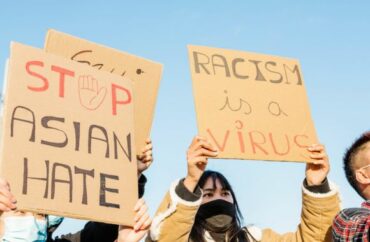
The study uses results from the Implicit Association Test and most red state respondents were liberals
Conservative states have higher levels of “anti-Asian xenophobia,” according to three New York University researchers, but other scholars questioned the design of the study.
“Mapping Anti-Asian Xenophobia: State-Level Variation in Implicit and Explicit Bias against Asian Americans across the United States,” was published in Socius, the open-access journal of the American Sociological Association.
The short paper found “Republican and swing states had higher levels of implicit bias against Asian Americans” while “states with older median ages and greater percentages of Asian populations were associated with less explicit bias.”
But the professors used data from the Implicit Association Test, which oversamples liberals, even in Republican states. That information is not revealed in the short paper but is included in the supplemental material.
“Project Implicit data is over-represented by liberal or highly educated participants in Southern or Midwestern states even though we weighted for the ratio of race and ethnicity,” the authors wrote.
NYU doctoral fellow Nari Yoo, University of Toronto sociologist Harvey Nicholson, and NYU psychologists Doris Chang and Sumie Okazaki did not respond to multiple College Fix requests for comment on the design of the study, sent in the past several weeks.
A social psychology expert who has previously argued that the IAT is flawed told The Fix that it is not certain the test can actually be associated with measuring racism.
“The IAT measures reaction time differences to reversed pairs of double-concepts (e.g., Asian-Good, White-bad vs. Asian-Bad, White-Good),” Rutgers University Professor Lee Jussim told The Fix via email.
“Whether such reaction times have anything at all to do with racism, and the related question of whether the IAT measures anything not already captured by simple questionnaires… is also unclear,” Jussim said.
A professor emeritus at the University of Michigan criticized the paper for its lack of substance and what he says are “misleading” conclusions.
“First of all, what the journal refers to as a ‘research article’ is two half-pages and a map graphic and is only 567 words, less than the length of an op-ed,” Mark Perry said in an email to The Fix.
MORE: Study claims 77% of Asian Penn students experienced or saw ‘hate’
“In most fields, research articles would be between 10 and 40 pages with multiple charts, tables, appendices, etc., and most serious academic journals in most fields would never consider a 567-word article,” Perry said. “It’s more like a ‘Letter to the Editor’ or a Comment, but not a ‘research article’ in my opinion.”
Perry said further:
The bias starts with the title ‘Mapping Anti-Asian Xenophobia,’ which is completely biased, pejorative, subjecting, and misleading. Note that the dictionary definition of ‘xenophobia’ is ‘fear and hatred of strangers or foreigners.’ And the authors never proved anything close to the ‘fear and hatred’ of Asians. Then the title mentions Bias against Asian Americans which is their subjective determination of the survey results.
Perry also questioned the paper’s usage of phrases such as “more foreign” and “greater preference for White Americans compared to Asian Americans” stating that it fails to define the terms and prove that they are associated with bias.
He further explained that more responses in red states indicating Asian Americans as “more foreign” could simply be tied to the smaller populations of Asian people in those states which he says does not necessarily prove bias.
He said that varying degrees of Asians in different states might elicit the “more foreign” responses, not a particular animus.
“For example, only 1.1% of the population in Wyoming is Asian, and it’s 2.8% in Iowa and 1.8% in Kentucky – those states are dark red meaning Asians are viewed as ‘More Foreign,’’ he said.
“In CA, 15.5% of the residents are Asian and it’s 11.8% in NY, and those states are light yellow meaning Asians are viewed as relatively ‘less foreign.’”
“That’s just common sense but doesn’t prove anti-Asian bias or xenophobia,” he said.
“This paper at best might show some correlations that don’t necessarily imply causation,” Perry said. “And the authors’ use of the terms xenophobia and anti-Asian bias reveals their own political biases in a paper that is too short and lacking in substance to be taken seriously,” he said.
Editor’s note: Mark Perry is an editorial consultant for The College Fix on an unrelated project.
MORE: Professor seeks males for testicle removal study
IMAGE: Xavier Lorenzo/Shutterstock





Please join the conversation about our stories on Facebook, Twitter, Instagram, Reddit, MeWe, Rumble, Gab, Minds and Gettr.